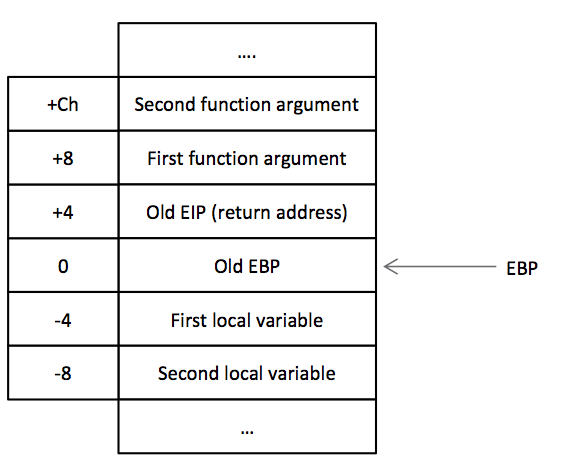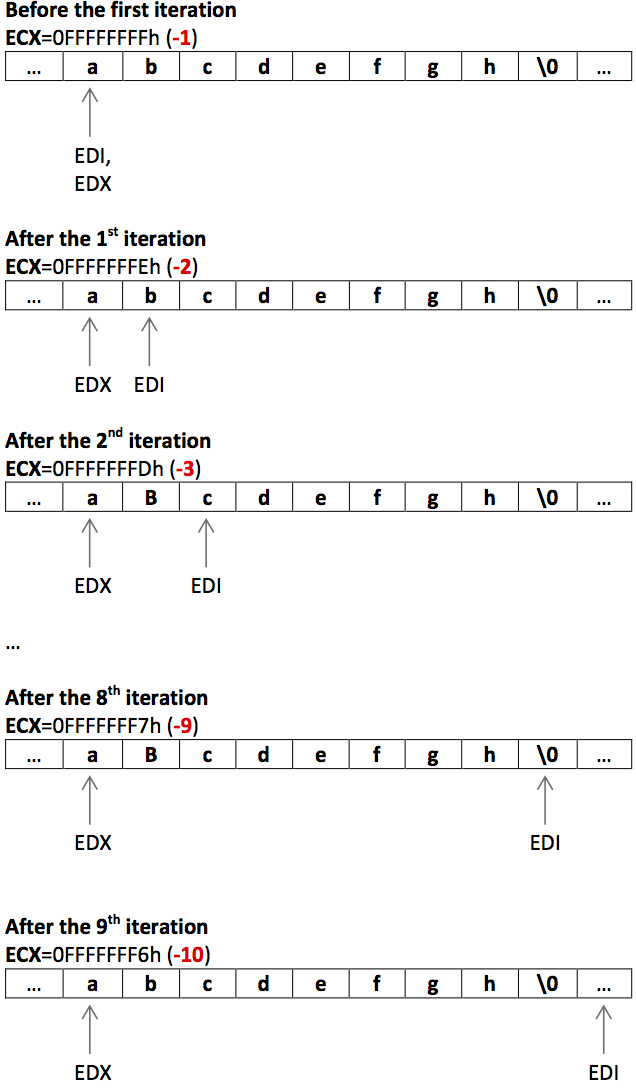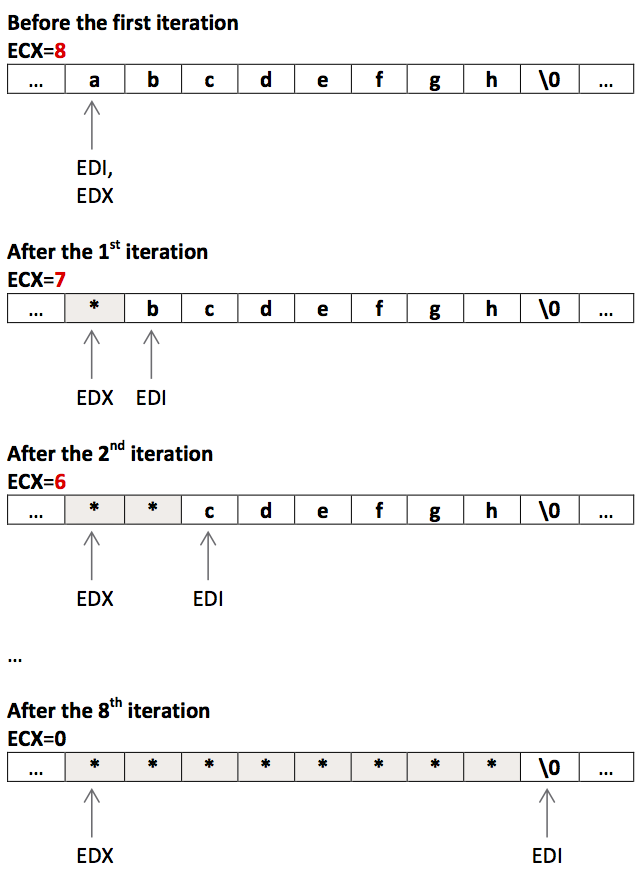Intro
This is the first post of what should be a blog series following my progress with the “Practical Reverse Engineering: x86, x64, ARM, Windows Kernel, Reversing Tools, and Obfuscation”, Bruce Dang, Alexandre Gazet, Elias Bachaalany, Sebastien Josse, ISBN: 978-1-118-78731-1.
The book includes number of exercises and the authors encourage the people to blog their solutions. That is exactly what I intent to do.
The solutions source code and write-ups PDF versions could be found also at the github repository at https://github.com/malchugan/PRE-Exercises.
Chapter1-Exercise1 – Task
“This function uses a combination SCAS and STOS to do its work. First, explain what is the type of the [EBP+8] and [EBP+C] in line 1 and 8, respectively. Next, explain what this snippet does.
01: 8B 7D 08 mov edi, [ebp+8]
02: 8B D7 mov edx, edi
03: 33 C0 xor eax, eax
04: 83 C9 FF or ecx, 0FFFFFFFFh
05: F2 AE repne scasb
06: 83 C1 02 add ecx, 2
07: F7 D9 neg ecx
08: 8A 45 0C mov al, [ebp+0Ch]
09: 8B FA mov edi, edx
10: F3 AA rep stosb
11: 8B C2 mov eax, edx”
Excerpt from: “Practical Reverse Engineering: x86, x64, ARM, Windows Kernel, Reversing Tools, and Obfuscation”,
Bruce Dang, Alexandre Gazet, Elias Bachaalany, Sebastien Josse, ISBN: 978-1-118-78731-1
My Short answer
EBP+8 is of type pointer to a char (first element of null terminated string)
EBP+C is of type char (1 byte)
The snippet is a body of a function responsible for replacing every character from a given string with another predefined character.

My Interpretation
Using some initial previous knowledge about how the function calls in assembly work I assumed that the snippet is most probably part of a function body. Those suspicions were fed by the use of EBP register, particularly [EBP+8] and [EBP+0Ch]. Usually those are pointers to the function arguments. The following is a standard representation of the stack layout after a function call.

Detailed Intel x86 function calls explanation could be found on http://unixwiz.net/techtips/win32-callconv-asm.html
Snippet walkthrough
Proof of concept
I decided to write an assembly program and run it through IDA Debugger to check if my interpretation is holding up which it did.
Note: This is a Linux assembly file using AT&T syntax. To assemble and link the code bellow execute the following form the command line:
$as -gstabs -o ex1_att.o ex1_att.s
$ld -o ex1_att ex1_att.o
As a result you should have ex1_att executable which you could examine with GDB, IDA or any other debugger of your choice.
Here is the listing of the program ex1_att.s:
.data
myString:
.asciz "abcdefgh"
.text
.globl _start
.type TestFunc, @function
TestFunc:
# function prologue
push %ebp # preserve the old EBP value
movl %esp, %ebp
# function body - same as the code from the book but in AT&T syntax
movl 8(%ebp), %edi # load the first function parameter in EDI - pointer to myStirng
movl %edi, %edx # store the initial EDI value in EDX
xor %eax, %eax # EAX = 0
or $0xffffffff, %ecx # set ECX to the maximum representable value
repne scasb # compare EDI content byte by byte with AL (NULL) or ECX becomes 0 :)
add $2, %ecx # at the end of repne scasb ECX has value (-strlen -2). With this sum ECX = -strlen
neg %ecx # ECX = strlen
movb 12(%ebp), %al # load second function argument
movl %edx, %edi # load the initial EDI value (firts argument) back to EDI
rep stosb # store strlen number of bytes in EDI al with the al value (character)
movl %edx, %eax # store EDX value in EAX
# function epilogue
movl %ebp, %esp # restore the old ESP value
pop %ebp # restore the old EBP value
ret
_start:
# push the function arguments into the stack
push $0x2A # ASCII '*'
push $myString # pointer to myString
# call the function
call TestFunc
# exit gracefully (call software interrupt 1 - exit)
movl $1, %eax
movl $0, %ex
int $0x80







Leave a Reply